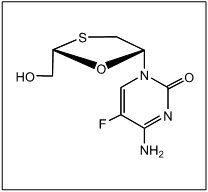Synthetic chemist Dennis Liotta, PhD, Samuel Candler Dobbs Professor at Emory and executive director of the Emory Institute for Drug Development, is the co-developer of an antiretroviral drug that has saved the lives of countless people living with HIV around the world.

Dennis Liotta; photo by Stephen Nowland
Starting out: Liotta says he was “genetically coded to be a chemist.” Not only was he naturally drawn to the field, he was able to follow the footsteps of his oldest brother, an organic chemist at Georgia Tech. “Charles was my first scientific role model,” Liotta says. “He is one of the most gifted teachers I’ve ever seen. He has a knack for being able to take even the most complex subject and translate it down until you understand it. He’s just remarkable.”
Path to academia: He never deviated from his desire to be a chemist—but he did find it a bit difficult to focus for a few years in college. “I got rejected by most graduate schools so quickly, I didn’t even know post mail could go that fast,” he jokes. CUNY had the foresight to accept him, however, and he was soon back on track. “It never really occurred to me that I would ever be anything other than a professor. I interviewed at some pharmaceutical companies. They were perfectly fine, with smart people. But I wanted to do my research, I wanted to teach,” he says.
Novel compounds: Liotta came to Emory in the late 1970s, at the time a “regional university with a few pockets of excellence.” The camaraderie appealed to him. “You can make up your own research structure. The collective wisdom and creativity of the group is allowed to emerge,” says Liotta. He began developing new methods for making novel compounds. “It was like a candy store,” he says. “I’d think of ideas and we would try them.” He gained a reputation as one of the most creative synthetic chemists working on antivirals.
A new epidemic: In the mid-1980s, the magnitude of the AIDS crisis was starting to become apparent. “Some of our most creative people were taken away from us by this terrible disease,” he says. “I became increasingly convinced that I had to do something that would make a difference, even though I didn’t know anything about virology. That was my driving force for getting into it, and I never looked back.”

FTC Structure
Fortuitous partnership: Liotta began working with Emory Professor of Pediatrics Raymond Schinazi and post-doc Woo-Baeg Choi and found an affinity for drug development. “There are a lot of hurdles to finding something that could be potentially a drug, and each time you’re able to figure out how to get over that hurdle, that’s very satisfying,” he says. “Emtricitabin (Emtriva) was important because it not only had the good potency and good safety profile because it paired up well with other drugs,” he says. “Because of that pairing, we were able to take AIDS from a death sentence to a manageable chronic disease.”
Still hard at work: Liotta is not content to rest on his laurels—he is still hard at work at Emory and through partnerships around the world and is hoping that scientific research will eventually lead to a cure for HIV as well as treatments and cures for other neglected diseases.
With a little downtime: He enjoys spending time with family and friends and cooking on the grill—a friend gave him a grilling apron with the title “The Grillfather.”
Sharing credit: Liotta may be one of the only synthetic chemists who is regularly recognized in public. A sampling of encounters: At a restaurant with his wife, their waiter thanks him for his discovery, saying, “I’m on that drug and it’s changed everything for me.” A close personal friend on Emtriva is flourishing. Mothers thank him for saving their sons’ lives. While proud of his contributions, and deeply touched when he is thanked by someone whose life has been saved or transformed, Liotta is quick to spread the credit around. “Thousands of dedicated scientists had their fingerprints on this drug development process,” he often tells a grateful recipient. “While you’re being thankful, let’s thank them all.”
Go here to watch the stories of those involved and those who benefited from the discovery of 3TC & FTC. Go here to read the full series of blog interviews with inventors, patients, and others.